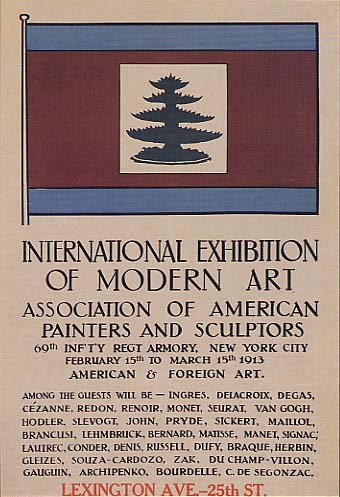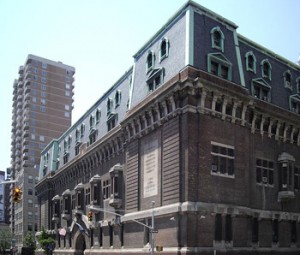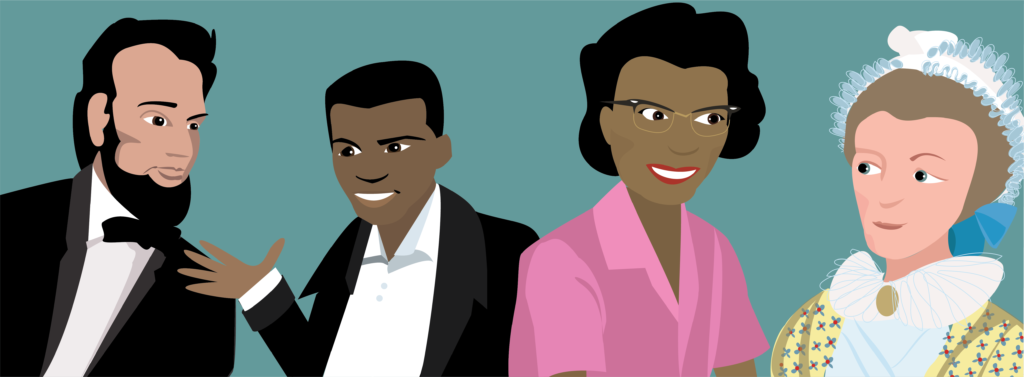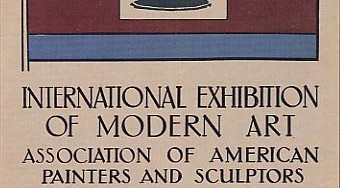The Armory Show Centennial

A Tale of Evolution
Evolution is seldom linear. Adaptation, the key to survival, whether that be of a species in the case of biology, or the enduring nature of a historic event, always involves matching traits with the environment. The Armory Show of 1913, the centenary of which is commemorated this Sunday, February 17, is like all products of evolution, both rare and revealing in its evolutionary tale.
The form of music from which the Jazz Age received its name shares with the Armory Show a common epoch. Hard to define, and at the time, scandalous in its public perception, Jazz music has no single line of ancestry. In 1913 the sheet music of African-American composers W.C. Handy’s blues and Scott Joplin’s Ragtime tunes were popular among urban youth. The condemnation heaped upon the music’s unorthodoxy by newspaper columns and from many a pulpit actually served to nurture the genre’s growth. P.T. Barnum had long before understood the power of skepticism and controversy. This lesson was not lost on those with a gift for promotion and marketing in the early 20th century.
Incidental with the second decade of the twentieth century – the last of which rural dwellers would be counted as a majority of Americans – a growing sense of unease that accompanies every period of rapid change was manifest. And so it was that on February 17, 1913, the International Exhibition of Modern Art opened to a public not yet ready to see where European art had gone and where American modern art was to go.
A Fleeting Reflection

The Armory Show occurred during the final decade of the Progressive Era. For most of a generation the relatively new advent of an educated class had reflected upon society’s darker practices, exposing these ills to the wider public. Within less than a decade of the International Exhibition of Modern Art’s closing, Americans would tire of self-reflection and embrace an orgy of reckless self indulgence ended only by the inevitable consequence of a cataclysmic depression. But in 1913, muckraking was a household term among the literate just as Ashcan was among the cultured.
Exhibits in Contrast
Impressionism was, by 1913, no longer considered as brash innovation, but was both popular, even respectable in the eyes of gallery visitors and academic art critics on both sides of the Atlantic. In the United States, the works of Mary Cassatt, J. Otis Adams and William Merritt Chase, among others, were popular and uncontroversial. It was the arrival of realists that challenged the bucolic subjects of the American impressionists and the post-impressionists across the sea.
At the turn of the 20th century, Europeans were witnessing the probative work of Pablo Picasso, Henri Matisse and Marcel Duchamp. Galleries featuring post-impressionist art were beginning to see new forms of art such as Cubism, Fauvism, and works featuring abstract themes. At the time, Americans, save all but a few, well-traveled art students and collectors, were comfortably unaware of the experimental methods being practiced in Europe, particularly in Paris. Good thing, too, as realist painters in New York, then still not one of the top cultural centers of the world, were associated with all the radical philosophies and political elements of the day.
The Road to Lexington Avenue
Three exhibitions of note preceded the Armory Show. From among the artists affiliated with these events came the core of the Armory’s key organizers. Both also served to expose the works of American social realist painters on comparable grounds with those of the National Academy of Design.
The Eight
The first of these shows was the 1908 exhibition of The Eight. Held at New York City’s Macbeth Galleries, the show received its name from the eight working American painters whose works were displayed. Robert Henri, John Sloan, Willam J. Glackens, Ernest Lawson, George Luks, Maurice Prendergast, Everett Shinn, and Arthur B. Davies. While the subjects of the paintings included urban settings soon to be associated with Ashcan movement in modern American art, landscapes were well represented. But the challenge to the National Academy’s conservatism was not the sole distinguishing feature of The Eight.
Organizers of the show also initiated a second departure from convention. They courted the press and encouraged critical responses from the institutions they challenged, but most of all, they recognized the general public as the true judges of art’s significance. This precursor to what is now called social media marketing played a crucial role in the Armory Show.
As American painters of daily life were receiving serious acclaim in New York, Europeans were about to find a home in America. The address of that welcoming dwelling was 291 Fifth Avenue, NYC.
“291”
By 1907, the gallery had, in a sense, re-branded, shortening its name from the Little Galleries of the Photo-Secession to simply, 291. In that year, gallery creator Alfred Stieglitz successfully added new works of photography as a peer to painting and sculpture that was just beginning to receive strong attention.
Between 1907 and 1910, 291 held several exhibits of European Artists whose work was largely unknown by the general public. These artist include Cézanne, Duchamp, Matisse, Picasso and the sculptor Auguste Rodin. Stieglitz did not ignore or exclude emerging American modernist artists, and in 1910 he showcased the works of John Marin, Alfred Mauer and Arthur Dove. The works, predictably, drew interest, praise and plenty of harsh criticism.
Exhibition of Independent Artists
Three alumnus of The Eight, Robert Henri, John Sloan and Arthur B. Davies, and independent painter Walt Kuhn organized a small, but significant exhibition in 1910, the Exhibition of Independent Artists. Put together on a shoestring budget, the show included the works of Rockwell Kent, William Glackens and George Bellows. All four would contribute works to the Armory Show, but Walter Kuhn’s inclusion would be particularly critical due to his considerable skills in promotion.
Together, with the exposure generated by The Eight and “291”, a beachhead was secured in New York, ready for the breakout that was to come in 1913.
The Armory Show
The Association of American Painters and Sculptors, formed in 1912 by nearly thirty artists, including Arthur Davies, Walt Kuhn, both of whom worked together on the Exhibition of Independent Artists, and former Robert Henri student Walter Pach. These three would lead the efforts in producing the AAPS’s single exhibition, the International Exhibition of Modern Art.
Holland Cotter’s October 2012 article in The New York Times, Rethinking the Armory Show, describes the collaboration between Kuhn and Patch in securing the European works that would produce the most sensational reviews of the Armory Show.
In September 1912, Kuhn left on a hunting-gathering tour abroad. He first visited, just under the wire, the Cologne Sonderbund exhibition, an immense new-art roundup that would serve as a model and source for the New York show. He then dashed on to collections, galleries and studios in other European cities, contracting for loans as he went.
In Paris he met up with Pach, who had settled there years earlier and become friends with Duchamp and Matisse, and who knew the art scene inside out. In standard Armory sagas, Pach is a functionary who shouldered the job of insuring work and shipping it to New York. As fresh research confirms, however, he did far more than that. In his polymathic role as trans-Atlantic liaison, artist, critic, connoisseur and broker for all sales of art from the exhibition, he was a crucial element in establishing the presence of European Modernism in the United States.
Davies joined his colleagues in Paris in November, to help secure the final European works for the show. As Kotter points out in his article, it was only upon the return to the U.S. by Davies and Kuhn that the work in procuring American works – one of the stated goals of the AAPS – began. It was shortly after this demanding search started that Walt Kuhn’s gifts of promotion began to take form.
The simple, now-famous pine tree emblem that served as the Armory Show’s symbol was designed by Kuhn. The pine tree was printed on poster, flyers and hundreds of buttons that were distributed freely to New York’s most highly visible denizens, including homeless street dwellers. Crowd sourcing, a term not coined for nearly one hundred years after Kuhn’s marketing stroke, owes a definite nod to Kuhn’s innovative advertising. He also secured for the show the location that would become the popular reference to the exhibition.
The 69th Regiment Armory

The exhibit opened at New York City’s 69th Regiment Armory on February 17. By the time of the New York show’s scheduled closing on March 15, 87,000 visitors had seen the works of not only Europe’s controversial artist, but also those of American painters whose exposure had been limited until the Armory Show. Edward Hopper, who displayed at the show would go on to become one of America’s best known painters.
At the exhibition’s Chicago run, attendance would exceed the New York count by 13,000 visitors despite the absence of the American art. Finally, Boston, the final leg of the tour would experience a poor showing, but by that time, the Association of American Painters and Sculptors could boast a slight profit, among other points.
Conclusion
For culture, the Armory Show of 1913 marked the beginning of a new age of modernism, while the year itself was to be remembered as an end in itself. The following year would bring the assassination of Archduke Franz Ferdinand and the subsequent carnage of a world conflagration that would claim roughly 40 million lives, nearly half of those civilians. The response to The Great War, but authors, sculptors and painters would reflect the skepticism of society’s ability to provide peace and even meaning.
There would be more experimentation by artists during the forty years or so following the Armory Show, but not until the Abstract Expressionist movement of the 1950s would the world be similarly shocked into confronting the meaning of art and the truths conveyed by the works.
The centennial of the Armory Show will be commemorated by events interpreting the 1913 exhibition, aided by some very recent scholarship on the subject. If history truly is prologue, the time now is certainly ripe for a revolutionary cultural movement. The art world is considered by many to be staid, popular music has none of the freshness and innovation of Jazz and the Digital Age, with all it’s promise, has increased readership, but of nothing remarkable as the literature produced in the decade and a half following the Armory Show.
Until such a development, a serious contemplation of that scandalous-by-design exhibition is more than worthy of our time.

